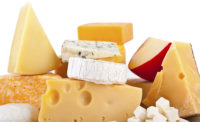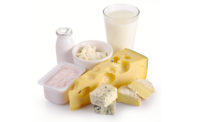Despite changing consumer lifestyles and anti-milk messaging, a new survey indicates consumers worldwide remain overwhelmingly positive about the “goodness” of milk when it comes to nutritional value. But the variety and convenience of milk must change.
That was the conclusion of a recent international consumer study commissioned by Tetra Pak and published in the company’s 8th Dairy Index. The Dairy Index is an annual report compiled to help dairy producers identify new areas of growth while providing information and analysis on the latest facts, figures and trends.
According to Tetra Pak, this year’s survey underscores a need for dairy processors to revitalize the relevance of milk among consumers of all ages by introducing innovative products and a fresh approach to marketing and communication. “The key to energizing dairy in all geographies is to make people excited about drinking milk, creating new products and developing communication campaigns to show that it is convenient, pleasurable, a special treat and relevant to all,” says Dennis Jönsson, president and CEO of Tetra Pak Group.
While dairy consumption is at an all-time low in some markets, the global market is expanding. Tetra Pak says understanding what consumers want is key to maximizing sales performance. Two trends the report identifies as influencing consumer choices include the desire for optimum health and wellness and increasingly busy, complex lifestyles. Consumers are looking for products that meet their needs and are willing to pay more for them.
According to the report, 39 percent of consumers will pay more for all-natural products; 33 percent will do the same for GMO free, while 28 percent will pay more for products high in protein. The report examines specific examples where dairy companies have successfully brought new drinks to market, identifying four global product trends. These trends include indulgent yet permissible treats; customized products that make milk easier to digest or provide added health benefits; drinks made for on-the-go consumption or snacking; and “pure” milk with organic or “natural” values. But innovative products are only part of the story.
“It’s just as important to find new, more relevant ways to communicate with consumers,” Tetra Pak says. “Campaigns worldwide are building on the story of milk’s goodness, combining the facts of milk’s nutritional and health benefits with more emotional appeals. Social media is also being used to spread milk’s many positive messages.” The report analyzes marketing and communications campaigns from the US, Europe, South Africa, India and Latin America. In the US, new initiatives like the Milk Life ads and #MilkTruth Facts social media campaign aim to reshape the way consumers think about milk while finding ways to lead them back to the category.
The report details how new communication channels in each of these geographical areas can be used to create successful marketing campaigns to raise awareness of the nutritional benefits of milk, while building an emotional connection with people to drive consumption. “Too many other foods are taking the spotlight when it comes to protein, and it’s time dairy, which has some serious protein power, captures some of this growth,” says Gregory Miller, chief science officer at the National Dairy Council.
Read the full report here.



